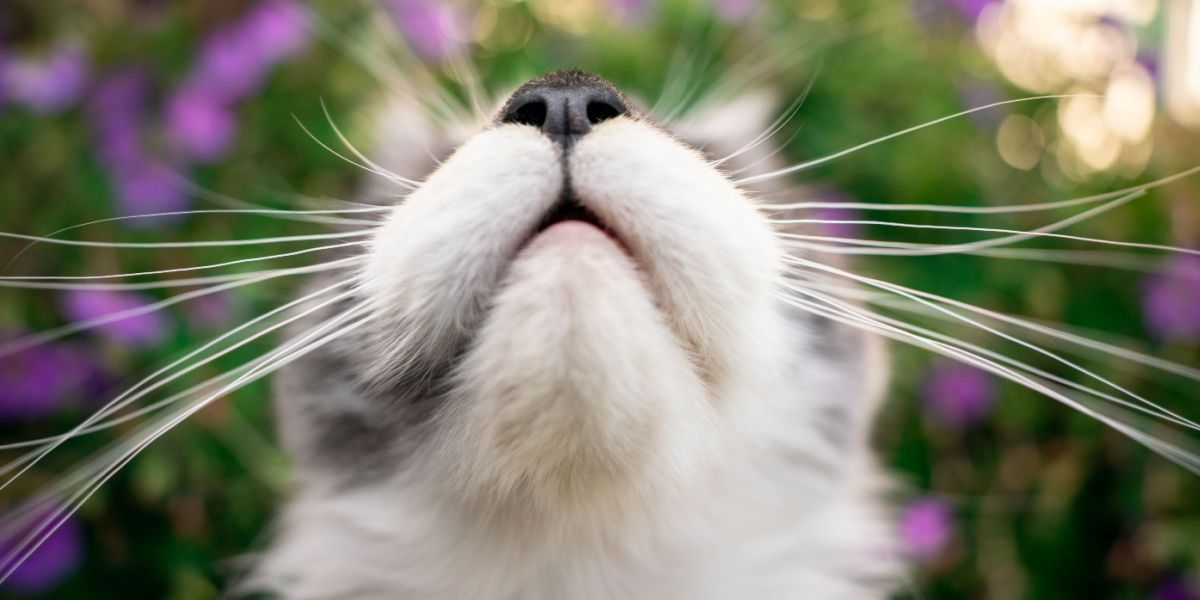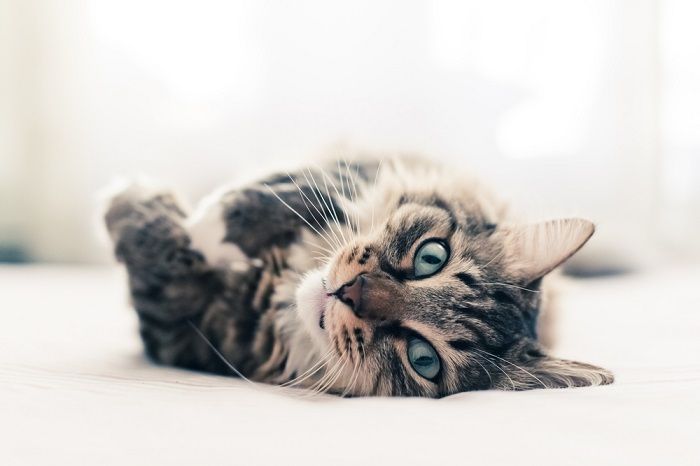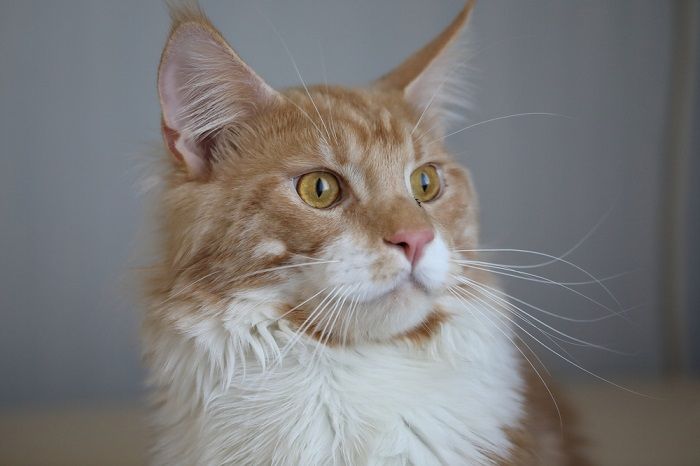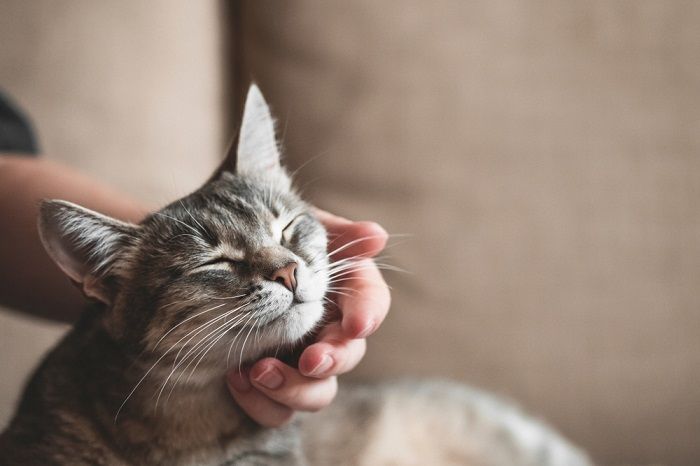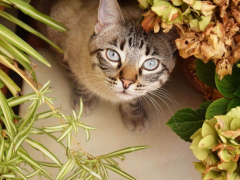Cats’ faces are framed by an impressive set of whiskers. Perhaps you’ve noticed a stray whisker lying around the house. Maybe you’ve been tempted to give your cat’s whiskers a trim while grooming them. And then you wondered: do cat whiskers grow back?
Whiskers are essential sensory tools that help cats make sense of their environment and their relation to it. Cat’s whiskers should not be cut as this will negatively affect the way they navigate their surroundings and can cause confusion and disorientation. If the whiskers are cut or naturally shed, they will eventually grow back, but this can take up to a few months.Key Takeaways
This article answers this important question and also provides a better understanding of the purpose that whiskers serve and why cutting them is not recommended.
What Are Whiskers?
Cat whiskers, as cute as they are, are not just for looks.
Whiskers, also known as vibrissae, are thick specialized hairs made up of a protein called keratin. They are embedded deeply in the skin, with roots that are three times deeper than that of regular hairs and are connected to the muscular and nervous systems. They are found on both sides of the nose and face, and above the eyes.
Cats even have whiskers on the backs of their front legs! At the base of the whiskers, in the hair follicles, there are plenty of nerves. Sensory organs, known as proprioceptors, are located at the whisker tips. Cat whiskers are therefore highly sensitive. So much so, in fact, that they detect very small vibrations and changes in air currents. They aren’t just cosmetic facial features or accessories.
Also Read: 10 Surprising Facts About Cat Whiskers You May Not Have Known
What Do Whiskers Do?
A cat’s whiskers are embedded deeply into the skin and they provide important sensory input.
Cats’ whiskers are like radar sensors. Their ability to detect small vibrations and subtle changes in airflow helps cats navigate their environment and gives them a better understanding of their relation to nearby objects and obstacles.
A cat’s eyes struggle to focus on objects that are close up and are better at seeing things at a distance. The whiskers help compensate for this poor vision. For example, a cat pushes their whiskers forward when they are hunting, surrounding the prey so that to assess its size and texture, and to pinpoint its location.
Whiskers also protect a cat from harm or injury. Their eyes are particularly sensitive to damage so the whiskers above the eyes can detect even the smallest of particles, like a fleck of dust or debris. This then prompts the cat to blink or shake their head. For cats that go outdoors, their whiskers offer some protection against sharp objects like branches or tall blades of grass.
The whiskers sense these objects first so that they don’t walk straight into them. Cats also use their whiskers as a unit of measurement. For example, the length of their whisker is usually proportionate to the width of their body, so they can judge whether they can fit through tight spaces.
Cats also use their facial whiskers to communicate how they are feeling. When they are bright and alert, engaged in play or hunting, their whiskers will be fanned out and positioned forward. A happy and content cat will have relaxed whiskers in a neutral position. Whereas a cat that is frightened or threatened will tightly pull their whiskers back close to their face.
Also Read: Whisker Fatigue: Does It Really Happen?
Can Whiskers Be Cut?
Cat whiskers allow cats to sense their surroundings better, and act as a sort of “second sight’ for them.
You should not trim your cat’s whiskers. As discussed above, whiskers aren’t just a cosmetic facial feature. They provide cats with important sensory messages. Removing the whiskers has a negative impact compared to trimming regular hairs on the rest of their body.
Also Read: Understanding Your Cat’s Five Senses
What Happens If You Cut Your Cat’s Whiskers?
Clipping a cat’s whiskers can cause stress and behavioral changes.
Whiskers are tactile hairs that provide sensory input that helps your cat get a sense of their surroundings and their orientation. If they are removed, your cat can become confused and distressed because they are not receiving the same information as they usually would. This can make them fearful, stressed, and anxious, even resulting in further behavioral changes.
Without functioning whiskers, cats become more vulnerable. For example, they won’t be able to assess small spaces as effectively which could mean getting stuck. They could walk into things that they would usually avoid and risk getting hurt.
Also Read: Should You Leave On A Light For A Cat At Night?
Is It Painful To Cut A Cat’s Whiskers?
While whiskers help a cat sense their surrounding, they are not in pain when a whisker gets clipped.
If you have already trimmed your cat’s whiskers accidentally or without realizing you’re not supposed to, you might be concerned that you’ve unintentionally caused your cat discomfort. Well, not to worry. Whiskers themselves don’t contain any nerve endings or blood vessels, so there is no pain when they are cut.
Of course, whiskers should never be pulled out as that would be painful since there are many nerves bundled at the roots.
Also Read: 10 Ways To Tell If Your Cat Is In Pain
Do Cat Whiskers Grow Back?
Whiskers sometimes fall out naturally, which is nothing to be alarmed about.
The good news is that, yes, whiskers will grow back with time, as long as there is no damage to the follicle. So, if you’ve trimmed your cat’s whiskers, there’s no need to worry that you’ve ruined them permanently. Just make sure you avoid doing so again.
Cats will also shed a whisker or two from time to time, as part of the normal hair growth cycle. If you notice a stray whisker lying around the house, there’s no need to be alarmed.
Whisker regrowth requires some patience as it can take up to a few months for the whiskers to grow back to a functioning length. If you have cut your cat’s whiskers and they are used to going outdoors, it would be best to keep them indoors while their whiskers grow back in. This is because they will be more vulnerable to becoming hurt or injured when part of their navigation system isn’t working as it should be.
Also Read: Why Do Cats Yawn?
Final Thoughts
Cat whiskers will grow back, but it is a long process that can take months.
So now, you will understand that cat’s whiskers are not just a cosmetic facial feature. They serve an important purpose as part of your cat’s navigation system. Trimming their whiskers has a negative effect on their overall well-being.
However, if you have done so accidentally or without realizing the impact it can have, the good news is that the whiskers will grow back eventually. This can take up to a few months and requires some patience!
Also Read: The 6 Best Anti-Vomit Cat Bowls
Frequently Asked Questions
How long does it take for a cat’s whiskers to grow back?
It can take up to a few months for a cat’s whiskers to grow back. This is true whether they have been cut, broken, or naturally shed. The time it takes to regrow will vary from cat to cat. Be patient when monitoring whisker regrowth.
What happens if you cut off a cat's whiskers?
If you cut your cat’s whiskers, you risk making them confused and disoriented as they lose out on key sensory information that helps them navigate their surroundings and avoid harm. This can lead to stress and anxiety, which can cause further behavioral problems.
Does it hurt to cut a cat’s whiskers?
No, it does not hurt your cat if you cut their whiskers. This is because the whisker itself does not have any nerve endings or blood vessels. However, cutting your cut’s whiskers is not recommended, even if it doesn’t cause them pain or discomfort. The main concern is that you are removing part of their sensory abilities and negatively affecting the way they navigate their surroundings safely.
-
Atkinson, T. (2018). Practical Feline Behaviour. Oxfordshire, UK: CAB International
